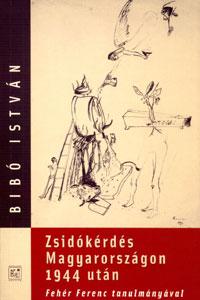
We kindly inform you that, as long as the subject affiliation of our 300.000+ articles is in progress, you might get unsufficient or no results on your third level or second level search. In this case, please broaden your search criteria.


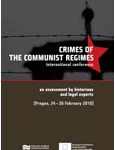
The independence of the Republic of Estonia was proclaimed exactly today 92 years ago. Today is Independence Day in Estonia. Estonia lost its independence in 1940 according to the secret protocol of the non-aggression agreement between the Communist Soviet Union and Nazi Germany and did not regain it after the end of the WWII. Th e occupation and annexation of the Baltic States was never recognised by the United States of America and other Western countries. Estonian diplomatic representations were active in the United States and the United Kingdom for the duration of the Cold War. Estonian passports issued by these representations were accepted as valid travel documents in many Western countries.
More...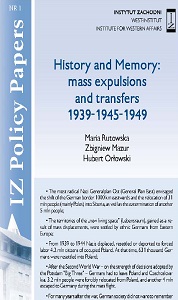
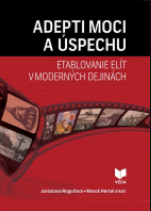
Tido J. Gašpar začal popri svojej umeleckej tvorbe produkovať politicky angažovanú publicistiku už v období prvej Československej republiky (ČSR). Postupne, najmä v priebehu 30. rokov sa politicky angažovaná publicistika dostávala do centra jeho tvorivých a publikačných aktivít. Paralelne so zvyšovaním počtu politicky angažovaných článkov sa jeho vlastná spisovateľská tvorba začala radikálne umenšovať, až sa napokon po etablovaní ľudáckeho režimu po 6. októbri 1938 vytratila takmer úplne. V našom príspevku sa chceme zamerať na poslednú etapu Gašparovej politickej publicistiky, ktorú tvorilo obdobie existencie Slovenskej republiky v rokoch 1939 – 1945 a v rámci nej sa venovať jej dominante, ktorú predstavovala ideologická konštrukcia slovenského národného socializmu. Gašpar bol totiž prívržencom pokračovania tzv. slovenskej revolúcie v národno-socialistickom duchu a v tomto smere sa zaraďoval do radikálneho krídla Hlinkovej slovenskej ľudovej strany (HSĽS) pod vedením Vojtecha Tuku a Alexandra Macha. V tejto súvislosti je zaujímavou skutočnosť, že do aktívnej politiky Gašpar nevstúpil v období demokratickej 1. ČSR, ale až v podmienkach ľudáckeho režimu. Svoj vstup do politiky Gašpar aspoň retrospektívne vnímal ako nevyhnutný kvôli potrebe „slú- žiť národu“: „Pudila nás láska k národu. Boli sme ľuďmi ťažkej dejinnej chvíle. Chceli sme národ zachovať!“1 Jednou z motivácií Gašparovho vstupu do aktívnej politiky teda bolo podľa jeho vyjadrenia úsilie „zachovať národ“ vo vtedajších neistých podmienkach, keď geopolitická situácia nevyznievala pre ČSR pozitívne.
More...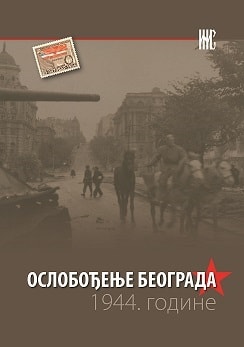
WWII was aproaching its end in fall 1944. Italy, member of the Axis had already capitualted. German armed forces suffered grave defeats both on Western and Eastern fronts. They were also forced to start withdrawing from Greece through the vallies of the Vardar and the Morava. The Chetnik movement of Dragoljub Draža Mihalović was also in bad shape at that time. After a number of admonitions to start military actions against the occupying forces, the Western Allies withdrew their military missions from the Staff of Supreme Command as well as from other Chetnik staffs. Furthermore, they withheld military and every other kind of aid. Under the pressure of the British government, the King and the Yugoslav exile government have given them up too. The increasingly difficult military and political situation of the movement of Dragoljub Draža Mihalović spurred the gathering of the Central Nationa Committee whose permanent session started in the village of Milićevci near Čačak on September 8, 1944. Apart from making combinations about the make-up of the „Chetnik government“, the possibility of the Russian crossing of the Danube into Serbia and Yugoslavia was discussed at the meeting. Having crossed the Yugoslav-Romanian border at Turnu Severin on September 6, 1944, the units of 3rd Ukrainian Front of the Red Army, together with the units of the People’s Liberation Army dispersed the German, Chetnik, Nedić and Ljotić forces and prepared to take starting positions for the begining of the Belgrade operation. On hearing that the Red Army units were crossing into Serbia and in order to butter up to the command of the Soviet troops, the commander of the Rasina-Toplica corps group colonel Dragutin Keserović immediately undertook sabotage actions, obstructing German transports and he started attacking German forces. He ordered that German lines of communication be severed between Vrnjačka Banja and Kraljevo. Part of the Toplica Corps was saddled with the task to do the same between the village of Stopanje and Trstenik. The third part of his forces had the task to cut off the communication between Kruševac and Stalać. Chetnik forces of over 10.000 soldiers were used for these actions. At the intervention of the leadership of the People’s Liberation Army of Yugoslavia, the attempt at cooperation between the Chetniks of Draža Mihalović and the Red Army units turned out to be a total failure since it was known that some Chetnik commanders continued colaborating with Germans. For the leadership of the Red Army the Chetniks became the enemy force in Serbia which was to be destroyed together with occupying and other Quisling forces. Part of the members of Chetnik units was disarmed and set free, whereas many joined the units of the People’s Liberation Army of Yugoslavia and took part in the fight against occupiers and their collaborators. The Chetnik forces which managed to avoid being disarmed, withdrew together with their commanders and the Supreme Command simultaneously with the occupying forces in the previously determined direction of Bosnia and further to the West where they met with tragic fate. Smaller Chetnik groups which remained in some parts of Serbia organized terrorist activities for some time after the end of WWII until they were completely destroyed.
More...
In the postsocialist regimes the rehabilitation of the quislings is a part of the useful new past. The article deals with the Serbian conservative attempts to rehabilitate serbian quislings in WW 2. The paper presents some forms of actually anti-antifascism. The former prescribed communist antifascism is replaced by anticommunist anti-antifascism. It was supposed the connection between economic privatization and a strong shift to the right awareness of the past. Quislings should be rehabilitated not only for normalizing nationalism but also because of the suppression of the Left, which should deprive her important moralpolitical capital – antifascism.
More...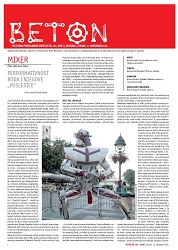
MIXER, Adriana Sabo: Performativnost roda i njegove „posledice“; ŠTRAFTA, Aleksandar Novaković: Mračno nasleđe; ARMATURA, Agron Bajrami: Politika i Rilindja u državnoj i nacionalnoj službi; VREME SMRTI I RAZONODE, Marija Dragnić: Poezija odbrane
More...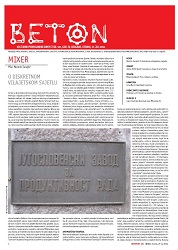
MIXER, Nermin Sarajlić: O diskretnom vilajetskom svijetlu; CEMENT, Jasna Dimitrijević: Leposava s druge strane šahta; ŠTRAFTA, Milan Đorđević: Pisci, fašizam, politika; ARMATURA, Erna Murić: Identiteti i kočnice; VREME SMRTI I RAZONODE, Predrag Lucić: Kosovo je putokaz za Srpsku; BLOK BR. V, Lazar Bodroža: Avanture zeca Milorada (6)
More...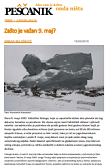
Dana 9. maja 1945. fašističke falange, koje su opustošile dobar deo planete do tog datuma, konačno su poražene. Do sloma vojne moći fašističkih država i njihovih satelita i saradnika bilo je potrebno da prođe gotovo šest godina tokom kojih je živote izgubilo više desetina miliona ljudi (procene se kreću od 50 do 80 miliona ukupnih žrtava, a neke procene su čak i veće). Iako je rat na jugoslovenskom bojištu nastavljen i posle 9. maja, ovaj datum nam je ipak važan zbog svog univerzalnog odjeka. Naše lokalne specifičnosti na globalnom nivou nisu bile od većeg uticaja, premda su rečito svedočile o dubini sukoba unutar jugoslovenskog društva.
More...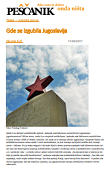
Može li se domaći antifašistički pokret i pobeda nad fašizmom zamisliti bez Jugoslavije i jugoslovenstva? Slično tome, može li se sovjetski antifašizam i pobeda nad fašizmom zamisliti bez Crvene armije i SSSR-a? Može, naravno. Ali, kada se iz sećanja izbrišu Jugoslavija i Sovjetski Savez, od antifašizma ostanu samo srpski i ruski nacionalizam, to jest nestaje taj ključni prefiks anti i ostaje samo – fašizam. Pa je onda moguće i da ovde ključni akteri proslave pobede nad fašizmom budu isti oni koji već decenijama razaraju antifašističko nasleđe i revidiraju istinu o pobednicima i poraženima u 2. svetskom ratu – a među njima i jedan notorni četnički vojvoda. „Na današnji dan srušeno je zlo koje je pretilo da uništi čovečanstvo“, zapisuje vojvoda kao predsednik države i dodaje: „Sve dok nas napadaju, naše majke rađaće heroje. Sve dok postoji Srbija, njeni heroji biće besmrtni“. A pošto više nema Jugoslavije, kao da implicira vojvoda, na jugoslovenske heroje antifašizma možemo mirno zaboraviti.
More...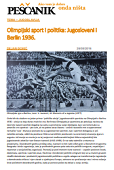
Ovde bih da ukažem na jedan primer ‘političke akcije’ jugoslovenskih sportista na Olimpijadi u Berlinu 1936 – akcije za koju danas malo ko zna. Berlinska Olimpijada je upamćena po pokušaju nacista da iskoriste najveći sportski događaj na svetu za promociju svoje ideologije, kao i po tome kako su američki crni sportisti – pre svih, ali ne jedino Jesse Owens – uništili nacistički mit o superiornosti nemačke ‘rase’. Manje je poznato da su jugoslovenski sportisti, kao i sportisti delegacija iz još nekoliko zemalja, odbili da pozdrave Hitlera nacističkim pozdravom na ceremoniji otvaranja Igara 1. avgusta. Još manje se zna da je za taj svojevrsni međunarodni bojkot Hitlera najzaslužniji bio jugoslovenski atletičar Ivan Stevan Ivanović (1913-1999). On se tada takmičio u trkama sa preponama. Devedesetih godina prošlog veka, Ivanović će biti rado viđen gost u liberalnim krugovima Beograda i bivše Jugoslavije, iako je prethodnih gotovo pola veka bio politički emigrant, nepoželjan i nepriznat u socijalističkoj Jugoslaviji. Poznatiji je pod imenom Vane Ivanović – uspešni poslovni čovek, diplomata, sportista i sportski pisac, filantrop i (londonski) politički emigrant koji se sa malom grupom mlađih demokrata i predratnih jugoslovenskih političara u egzilu zalagao za transformaciju Jugoslavije u demokratsku državu i njen ulazak u ujedinjenu Evropu, odnosno za sprečavanje rata i mirno rešenje krize početkom devedesetih godina, kada je ponovo počeo da dolazi u svoju zemlju.
More...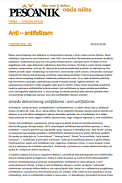
Nakon sloma hladnog rata radikalno se menja kultura sećanja, a time i odnos prema fašizmu. Nova sadašnjica, koja otvara novu budućnost, uvek traži i novu prošlost. Nerazdvojiva povezanost prošlosti, sadašnjice i budućnosti je osnovna crta ljudske temporalnosti i istorijske svesti. Prošlost ne čine događaji po sebi, nego dešavanja snabdevena aktuelnim smislom. Premda je svaka istorija naizgled osobena i neuporediva, na kraju 20. veka javlja se kod prevladavanja prošlosti niz sadržaja koji nisu lokalne prirode: otpor i kolaboracija sa nacizmom, izravnavanje starih računa u ime pravde, stvaranje integrativnih mitova radi ponovnog učvršćenja nacionalnog identiteta i izmirenja pocepanog društva nakon sloma evropskog socijalizma i blokovske podeljenosti sveta. To su opšti društveni podsticaji koji nenamerno i postupno ujednačavaju pisanje evropske istorije. Izgleda,međutim, da ujednačavanju doprinosi i jedan drugačiji važan proces. Naime, nakon sloma evropskog socijalizma svuda je uzdrmana antifašistička kultura sećanja. Anti-antifašizam se lagano probija pod plaštom nove istoriografske objektivnosti. U ovom prilogu bi trebalo pokazati kako domaće političke elite i revizionistička inteligencija nameću nove anti-antifašističke obrasce sećanja?
More...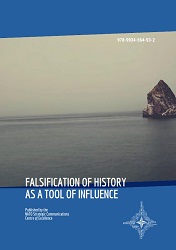
Compared to many other East European countries, the issue of history – or the history politics – in relation to Russia has never been such a central or openly disputed one in Finland. This is the case for obvious historical reasons. Russians have not openly accused Finnish historians for falsifying history, either; however, this does not mean that Russian attempts to control or use the past have not been a concern in Finland. Rather, such attempts have been quite subtle, playing with strong mental images favourable to Russia and offering competing narratives, or ‘alternative truths’, to the Russian audience, which has been their main target (presumably including the Russian minority in Finland). In this article, two recent or on-going cases of such falsifications of history, having taking place between 2016 and 2019, are briefly examined and contextualised. Both are connected to the Second World War and the hostilities between Russia and Finland. The first is the case of the shelling of Mainila. In this context, we are referring to the Russian attempts to challenge the established view of the Soviet Union having started the war against Finland on 30 November 1939, and arguing that, instead, it was a Finnish provocation, influenced and encouraged by Germany.
More...
For the Russian Federation, the most important current issue in the scope of history is the strengthening of belief in the great victory of the USSR over Nazism and, as Jolanta Darczewska writes, a rehabilitation of the special services, as well as a change in the assessment of the deeds of Stalin. The issue of cooperation between the USSR and Hitler before 1941, which, in Russian historiography, is the beginning of the Great Patriotic War, has become quite a problematic question in this context. In this regard, we can observe a number of activities in Russia, the purpose of which is to relativise such events as the secret protocols to the Molotov-Ribbentrop Pact or the Katyń Massacre (the murder of Polish officers, non-commissioned officers and other individuals in 1940); ethnic genocide as a part of the ‘Polish Operation of the People’s Commissariat for Internal Affairs’, i.e. NKVD (1937-38); the joint Soviet-German parade in Brest; and the NKVD–Gestapo methodological conferences (1939-1940). The same applies to 17 September 1939 – i.e. the aggression of the USSR against Poland. This text will be devoted to the methods of falsifying this event by the Russian Federation.
More...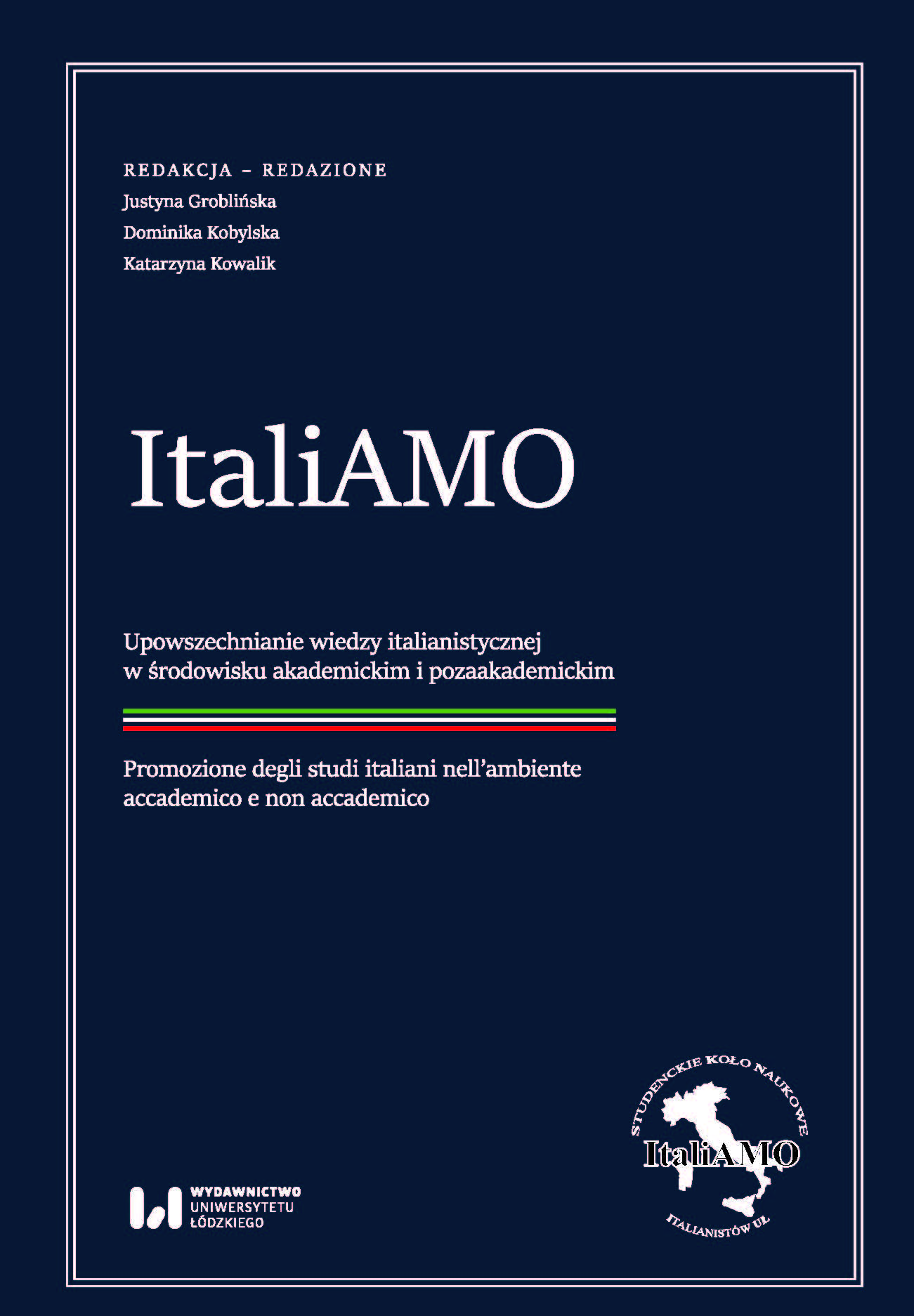
The essay deals with the violent denationalization process of the Slavic minorities in the territories of Venezia Giulia annexed to Italy after the First World War. Liberal Italy already adopted policy that tend to assimilate the Slavic populations; but fascism adds a strong charge of violence feeling an evident sense of ethnic superiority. The fire of the Narodni Dom is the announcement of the forced denationalization policy implemented by the so-called border fascism. The fascist state implemented the forced Italianization of names and toponyms and imposed the Italian language in every aspect of public life: courts, schools, churches. The essay aims to analyze the role that the authoritarian change of names, surnames and toponyms had in the process of forced assimilation into the Italian state of the eastern territories acquired after World War I. We use information from essays, literature, testimonies and legal texts.
More...
The article focuses on the main Cold War ideologemes constructed in the Russian émigré press of the 1930s, before, during and immediately after World War II. The main source is the journalism of Georgy Fedotov in a comparative analysis with that of Nikolai Berdyaev. The article traces the construction of Fedotov's concept of Pax Atlantica as an ideological ideal and counterpoint to the Soviet Union. Fedotov's main ideologem is the alignment of fascism and national socialism with Stalinism in a hybrid "communofascism" in order to blur the boundaries between defeated and victorious after the war and leave the only victor, the Atlanticist world.
More...
The Weimar Republic, through its victories against the early insurrections aimed at taking down the imposed republican state, showed that the Republic was able to survive on its own. However, opposition to republicanism remained very much alive underground through certain radical political parties and paramilitary organizations. This paper will analyze both left and right-wing opposition to the Republic, which were both not strong enough to overthrow it, but did force its supporters into underground paramilitary organizations that contributed to the Nazi takeover. First, this paper will show how the Kapp Putsch was a manifestation of monarchist discontent against the fledgling republic. Second, it will elaborate on socialist opposition against the Weimar government, as seen through the Bavarian Soviet Republic. Third, it will explain the phenomenon of paramilitarism as an outgrowth of anti-republicanism and cyclical brutalization. Finally, it will explain how the Nazis’ Sturmabteilung (SA) utilized paramilitary members from both the left and right-wings to fill its ranks and overthrow the Weimar Republic.
More...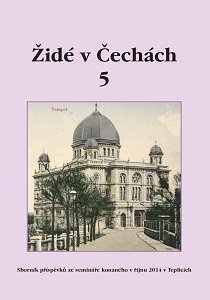
Attack on a Jewish prayer hall in Pilsen on March 7, 1939, was orchestrated by the Vlajka movement amid rising anti-Semitic sentiments in Czechoslovakia. It describes the socio-political climate of the late 1930s, marked by economic and national crises, and the increasing radicalization of the German minority influenced by Nazi Germany. The attack involved the use of explosive devices, resulting in the deaths of two perpetrators due to a premature explosion. The investigation revealed the involvement of local authorities and the broader anti-Semitic activities of the Vlajka movement. The document also covers the post-war trials of the perpetrators, highlighting the challenges in prosecuting them due to the political changes and the onset of World War II. It concludes with reflections on the significance of this event as a reminder of the dangers of extremist ideologies and the importance of preserving historical memory.
More...
Based on unpublished and published archival material of Yugoslav provenance, as well as available relevant literature, this paper analyzes the efforts of the Association of Yugoslav Jews in the USA to repeal two anti-Jewish decrees of the Kingdom of Yugoslavia from 1940, during a portion of World War II and the implementation of the Holocaust in the territory of the Kingdom of Yugoslavia (1942–1943). The main focus is placed on the activities of the Association of Yugoslav Jews in the USA aimed at influencing the Yugoslav government-in-exile to revoke the anti-Jewish decrees (1942–1943). Special attention is given to the questionable legal nature of the annulment of the anti-Jewish decrees carried out by the Ministerial Council of the Kingdom of Yugoslavia on June 2, 1943.
More...